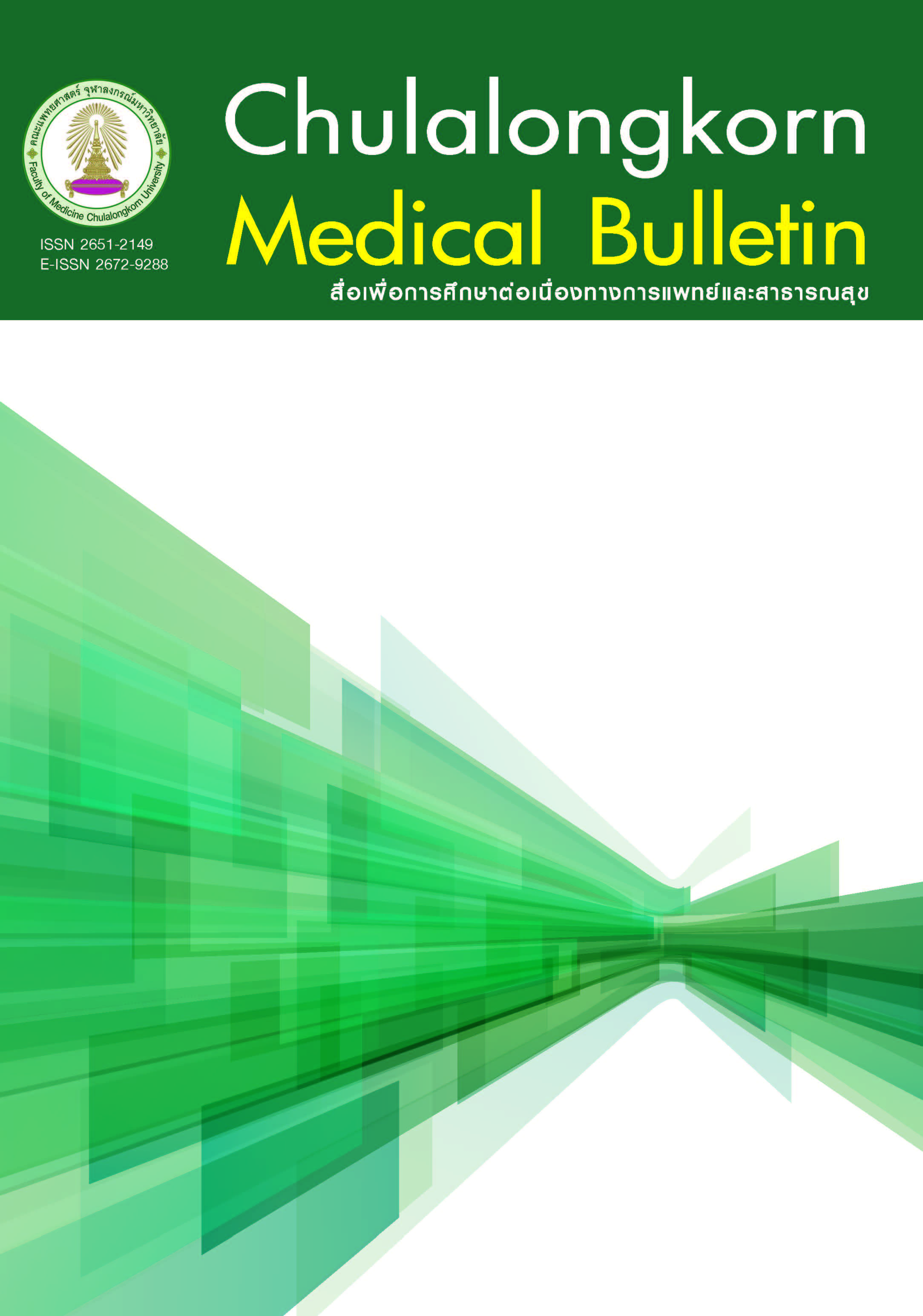Effects of Phuthai dance exercise on pulmonary function in Thai elderly: a pilot study
Keywords:
Phuthai dance, elderly, pulmonary functionAbstract
Background: Advancing age is associated with a decline in pulmonary function. However, exercise training may retard pulmonary changes that accompany aging and reduce the risk related to chronic lung disease. The Phuthai dance is a traditional exercise that believed to improve pulmonary function in elderly.
Objective: To determine the effects of Phuthai dance exercise on pulmonary function in Thai elderly.
Methods: This is an experimental study on 20 elderly aged 60 - 70 years. Participants were randomly divided into 2 groups: control group (mean age 65.40 + 3.78 years, n = 10) and experimental group (mean age 65.20 + 2.94 years, n = 10). The control group received health education whereas the experimental group performed Phuthai dance exercise for 50 minutes/day, 3 days/week for 12 weeks. The pulmonary functions included forced expiratory volume in one second (FEV1), force vital capacity (FVC), ratio of FEV1/FVC (FEV1/FVC%) and maximal voluntary ventilation (MVV) were assessed at baseline and the end of the study.
Results: At the end of the study, the experimental group showed significantly increased pulmonary function (FEV1, FVC, FEV1/FVC% and MVV) (P < 0.05) compared to baseline while there was no change in control group. The comparison between groups showed significant difference in all parameter of pulmonary function (P < 0.05).
Conclusion: Phuthai dance exercise can improves pulmonary function in the elderly.






